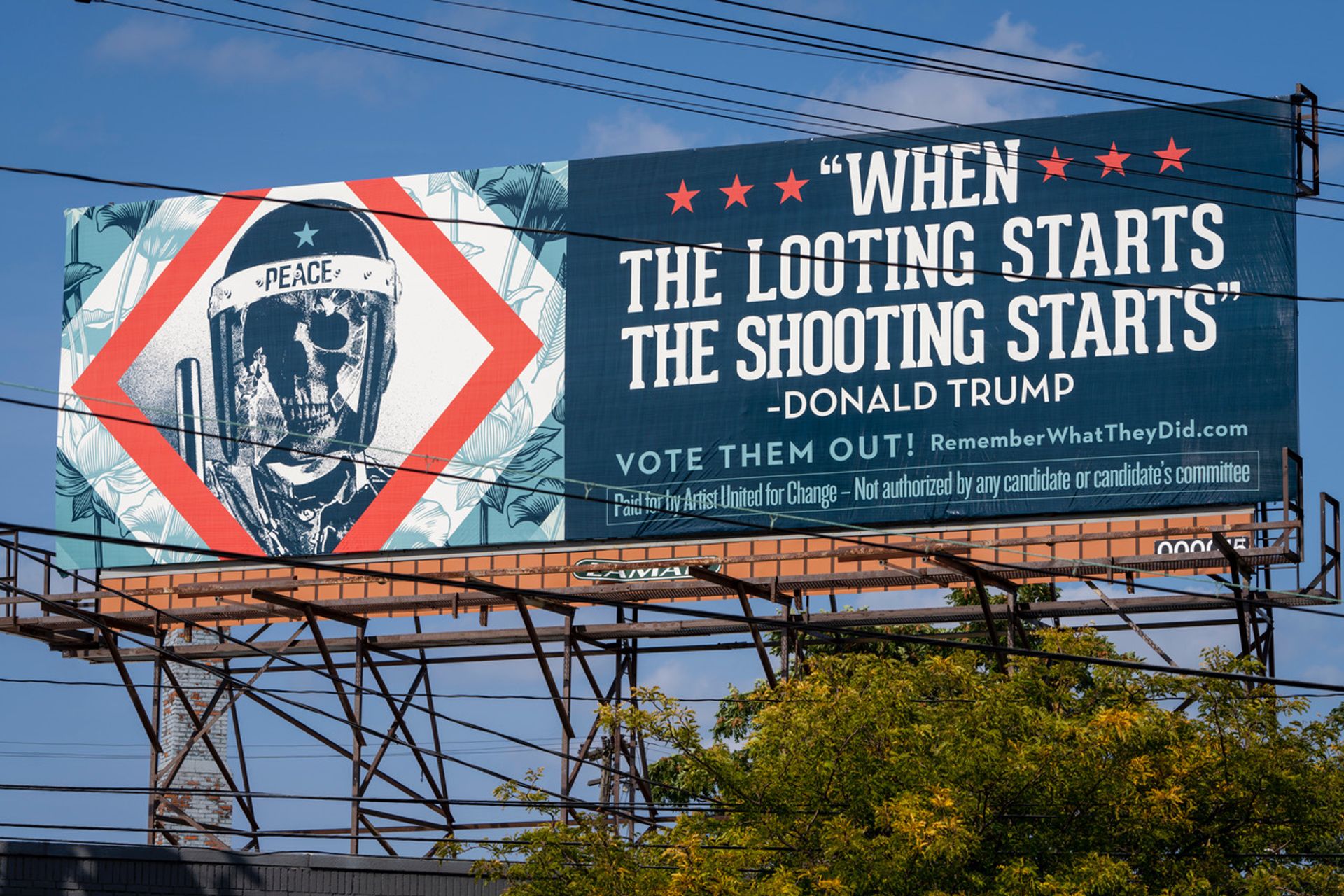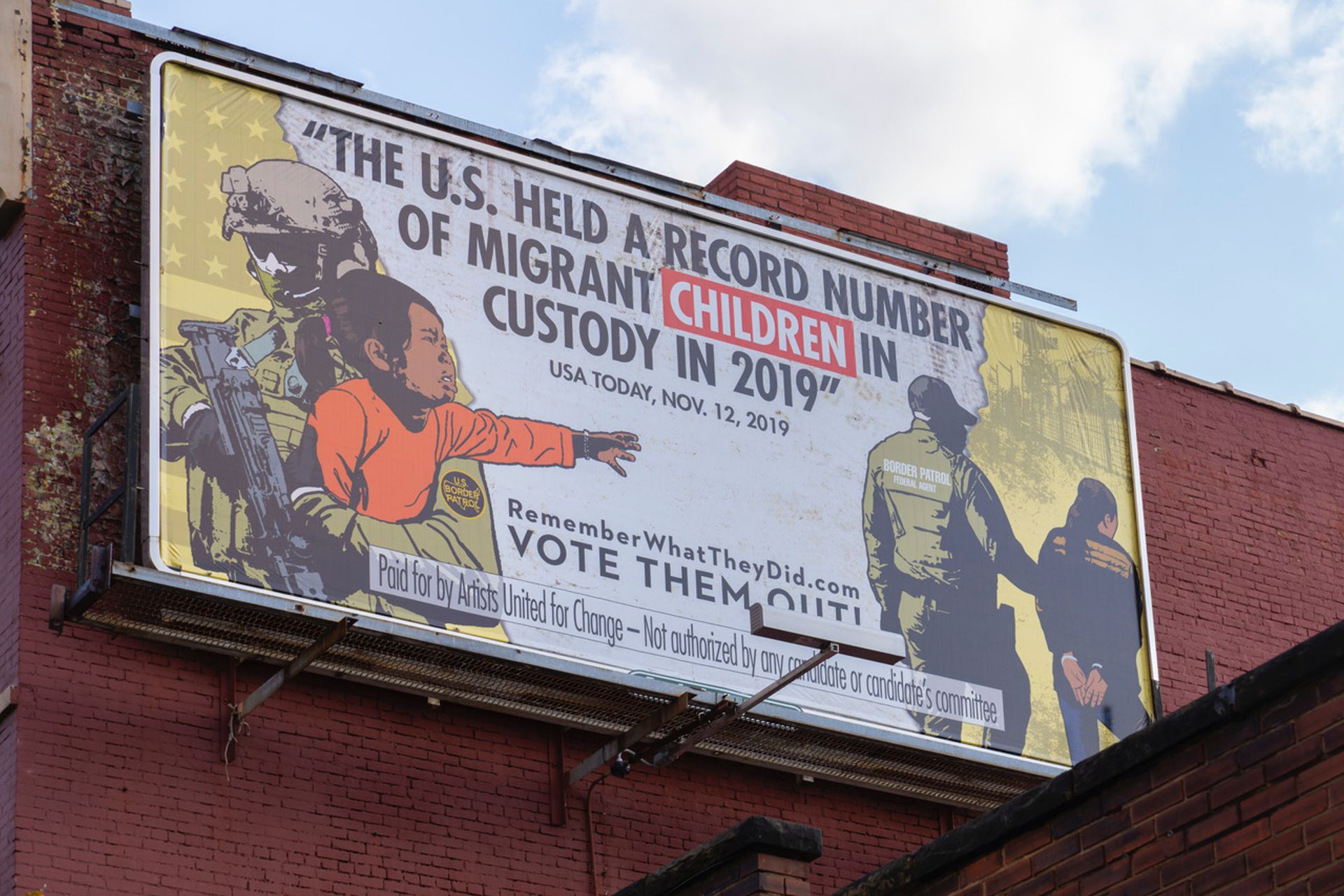For the first US presidential debate between Donald Trump and Joe Biden on 29 September, the Cleveland-based political action committee Artists United for Change wanted to be sure their billboard campaign was up and running. About seven months in the making, the series urges Americans in five battleground states of Ohio, Arizona, Michigan, Wisconsin, and Pennsylvania to “Remember What They Did” and #VoteThemOut in November.
On the eve of the debate, held at Case Western Reserve University and The Cleveland Clinic, nine billboards along with hundreds of posters were in place throughout the city. “We did the route from Hopkins Airport into downtown (I-71) as well as strategically around the debate site,” says the artist and organiser Scott Goodstein, who created the campaign with the multimedia artist Robin Bell. Jeff Rusnak, a longtime political strategist, correctly guessed where the road closures might be, and purchased several billboards along the road where traffic was rerouted, assuring that Trump and his entourage would drive by the signs.

Shepard Fairey, the noted street artist, used Trump's controversial quote "When the looting starts, the shooting starts" about the Black Lives Matter protests for his billboard Photo: Bob Glick, courtesy of Artists United for Change
In Cleveland, large-scale works by artists Claudio Martinez, Shepard Fairey, Nate Lewis, and Justin Hampton have been paired with fact-checked quotes on immigration, coronavirus, and police brutality made by President Trump. “We are reminding voters of the harm Donald Trump has caused the Buckeye state through his words and actions,” Rusnak says. Work by the artists Nekisha Durrett, Rafael Lopez, Robert Russell, Rob Sheridan, and Swoon (Caledonia Curry) will appear in other states.
New York-based artist Nate Lewis, a former nurse who worked in a hospital ICU ward for nine years, chose to create a bold patterned piece around the phrase “Just disappear, I hope”—one of the US president’s cavalier remarks about the coronavirus at the start of the pandemic. “That is near the medical center,” says Bell, adding that the organisers worked with artists to figure out how best to place their images in public spaces. “Nate works with perforated paper, so his design incorporates that.” Bell, who had only seen the work on a video screen, finally got to see the billboard in its full glory of 14 feet by 48 feet while in Cleveland plastering posters and running protest projections during the debate. “It really held up.”

“We are really trying to motivate people to vote,” says Robin Bell, who helped create the campaign "Remember What the Did" Photo: Bob Glick, courtesy of Artists United for Change
There are 40 billboards up in total among the five states with plans to maintain those and add more through to the election in November. However, not all the artists’ works were accepted by the advertising companies that manage billboards in each city. For instance Swoon, who chose to depict Trump’s use of force against Black Lives Matter protesters has only been placed in Michigan –and getting two billboards with her work up there was a challenge. Rusnak, who has been negotiating with the billboard brokers, was told that her piece, A Beautiful Picture, showing protesters being pushed into a void by heavily armoured police, did not fit the quote.
“We are really trying to motivate people to vote,” says Bell, who added that most of the billboards were placed in neighbourhoods, not along highways. “We lost by such a small margin last time.”


